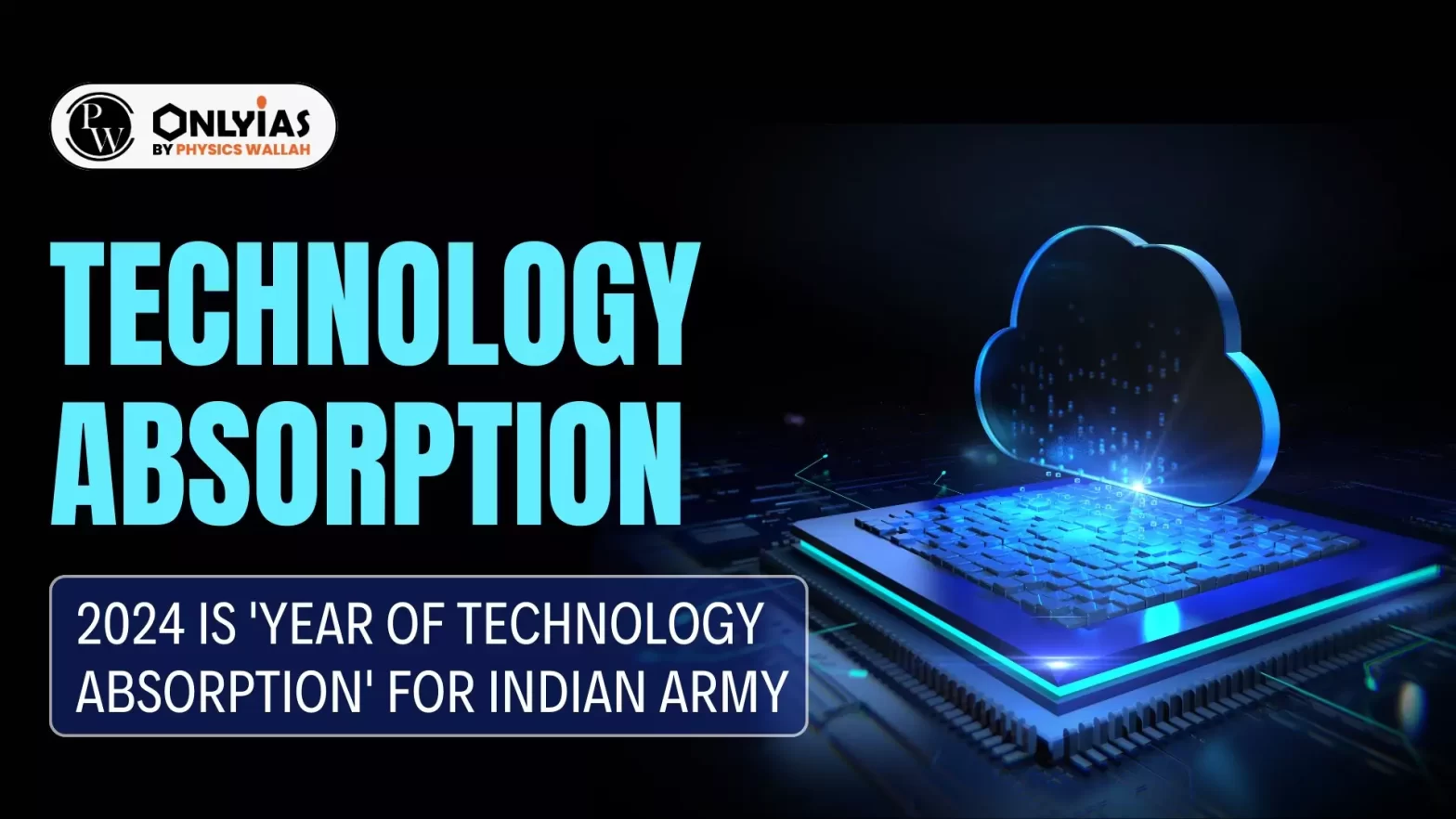Context
Recently, the Indian Army has been observing 2024 as the ‘Year of Technology Absorption’.
| Relevance For Prelims: Defence Technology, DRDO, Disruptive Military Technologies, DRDO, Mission Divyastra, End-to-End Encrypted Mobile Ecosystem For Indian Army, Role Of AI In Defence, MIRV Technology, Swarm Drones, MQ-9B Drones (UAV), and Counter Drone System.
Relevance For Mains: Issues with New Military Technology and Defence Preparedness. |
Introduction
The Indian military is headed in the right way; however, the issue lies in maintaining technological absorption with a sophisticated grasp of the requirements.
What is Technology Absorption in terms of Disruptive Technology (DT)?
- It includes artificial technology, autonomous weapon systems, drones, sensors, robotics, space technologies, and hypersonic weapon systems (also known as legacy systems).
Strategic Embrace of Disruptive Technologies
- The Potential of Technologies: The ‘Year of Technology Absorption’ initiative demonstrates the Indian Army’s acknowledgement of the transformative power of disruptive technologies such as artificial intelligence, autonomous systems, and space technology.
- Competitive edge: By prioritizing the adoption of these technologies, the Army hopes to maintain a competitive advantage over rivals and improve its ability to tackle emerging threats successfully.
- Self-reliance: This strategic focus on technology absorption is consistent with Atmanirbharta’s overall strategy, emphasizing self-reliance and indigenous growth in defense technologies.
Integration with Legacy Systems
- Integration: Adopting disruptive technology includes integrating cutting-edge innovations with legacy systems and military organizations.
- Complementing rather than replacing: Rather than replacing traditional weapon platforms, the emphasis is on supplementing them with modern technology to improve operational efficiency and strategic efficacy.
- Seamless Transition: This strategy promotes continuity and synergy between existing military doctrines and upcoming technical breakthroughs, allowing a smooth transition to a more technologically advanced force.
Challenges in Technology Absorption
- Compatibility Challenges: Introducing new technologies into existing structures or systems, sometimes known as legacy systems, can be difficult due to compatibility concerns and the requirement for adaption.
- More time spent on training and skill development: Ensuring that employees are adequately taught to operate and maintain new technologies is critical. Technical skills and knowledge may require a significant financial investment and time commitment.
- Lack of Resources: Limited financial and human resources may limit technology adoption because maintaining existing military gear requires more expenditures. Because of this, the military has left relatively little money for technology adoption.
- Cybersecurity Concerns: Integrating new technologies increases the potential for cyber threats and vulnerabilities. Protecting systems and networks against cyber-attacks becomes critical.
- Supply Chain Management: Dependence on external suppliers for vital components or technologies can present hazards relating to the dependability, availability, and security of supply chains, such as fighter jet engine imports from the US.
Technological Absorption Needs to be Governed Organically
- Recognising the Sensitivity: Identify current vulnerabilities and sensitivities within the military organization and activities. Identify the gaps between present capabilities and future requirements.
- Understand Latest Technologies: It is essential to understand the most recent technological advances and their possible uses in military operations. Also, understand the context in which these technologies can be effectively used.
- Integrating at the Unit Level: Ensure that technology adoption is not restricted to higher levels of command but is visible at the unit level. Democratize the use of technology to empower front-line workers.
- Focus on Macro-Level Aspects: It includes organizational restructuring, human resource management, the development of specialists at various levels, civil-military fusion, data integrity management, and procurement rules adapted to Defence Technologies (DTs).
- Learn from Recent Wars: Analyze lessons from recent and ongoing conflicts, such as the Russia conflict, to improve future planning and decision-making.
Conclusion
The Indian military is moving in the desired direction, but the challenge will be to sustain this with a nuanced understanding of the applicable requirements. In this context, many lessons from recent and ongoing wars should not be lost sight of.
Also Read: NAMO Drone Didi Scheme
![]() 9 Apr 2024
9 Apr 2024

